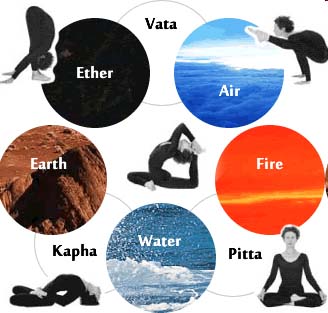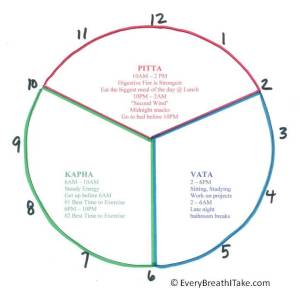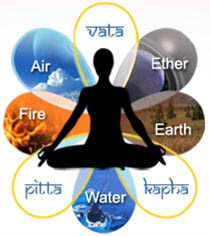 A few weeks ago I was chatting to a fellow yoga teacher and mentioned that I love Ayurveda because it has really simplified my life. I think he literally snorted, possibly rolled his eyes and said something like, “Ayurveda and simple, never heard those two words in a sentence together.”
A few weeks ago I was chatting to a fellow yoga teacher and mentioned that I love Ayurveda because it has really simplified my life. I think he literally snorted, possibly rolled his eyes and said something like, “Ayurveda and simple, never heard those two words in a sentence together.”
To be honest, I would have made a very similar comment only a few years ago and scoffed at the notion of simplifying Ayurveda, the traditional medicine system of India (considered one of the oldest in the world) and sister science to Yoga.
It wasn’t for lack of studying Ayurveda that I would have scoffed in the past. In fact, my first job after graduating massage school in 2003 was at an Ayurvedic clinic and wellness spa. I did the constitution tests, got consultations, read David Frawley’s famous books, and learned all of the traditional Ayurvedic bodywork treatments like abhyanga, swedana, garshana, bastis and shirodhara.
I learned more about Ayurveda in my yoga teacher training in India, even dedicated my final project to Yogic and Ayurvedic understanding of digestive health, and then went and experienced first hand the powerful Ayurvedic cleansing and detoxing process know as Panchakarma. Which was probably one of the most challenging experiences I’ve had, but at the end left me feeling clean as a new born baby. My eyeballs literally looked white as snow and I felt like my skin was radiating.
I did my best over the years to stick to my constitution food lists, exercise regimes and herbs, but always felt a bit confused about what I should be eating, doing or taking something and why. That is until I started studying with my amazing Ayurveda teacher Cate Stillman who totally transformed my life and understanding of Ayurveda with her 9 month Living Ayurveda course.
This system has now become a tool to simplify my life, and it truly can be for everybody! So I wanted share with you all my simplified understanding and how it has made a much bigger impact than all the complicated practices, recipes and lists I tried to follow previously.
First, I started to see the whole world in terms of the 5 elements and their qualities.
 Just like the Chinese medicine system, Ayurveda recognises that ALL things are comprised of the 5 elements (ether, air, fire, water and earth). Ayurveda further groups the element into three main categories, also know as humours, constitutions or doshas: Vata (ether + air), Pitta (fire + water) and Kapha (water + earth).
Just like the Chinese medicine system, Ayurveda recognises that ALL things are comprised of the 5 elements (ether, air, fire, water and earth). Ayurveda further groups the element into three main categories, also know as humours, constitutions or doshas: Vata (ether + air), Pitta (fire + water) and Kapha (water + earth).
We all know innately what the elements feel like and what they’re qualities are; for example air feels cool, light, or changeable, fire feels hot, fast or sharp and earth feels heavy, dense or stable.
We each contain all of these elements and their qualities, as does everything around us, but simply in different ratios and this changes throughout the day, our life, or depending on season and culture.
I started to notice more when my environment had lots of fire, or my food felt more heavy and earthy, or when my thoughts were airy and changeable or my body more watery. I began to see the elements in all parts of my life.
Second, I worried less about stories and more about the elements and their qualities.
Have you ever had a bad day and the list of all the things that were going wrong felt endless? On top of that you have this overwhelming sense of not knowing why it’s going so poorly and analysing it just isn’t helping?
I know I have, and getting lost in the stories of who, what, why and how just doesn’t help, in fact, it often makes it worse.
Instead of going over and over in my head what happened or why I felt bad, I started to pay attention to the qualities of what happened or how I felt. For example, I’ve had too much coffee and my thoughts are scattered, lots of air qualities are showing up in my mind now. Or, I just had an argument with my partner, I’m feeling really pissed off, lots of fire is showing up in my emotions and body right now.
I stepped away from the stories and habits and simplified each experience down to what element or dosha was dominating.
Third, I focused on balancing the elements in the present moment.
The Ayurvedic system has a deceptively simple, yet massively powerful principle that show’s up in all of the literature:
Like increases like and opposites balance.
Our desire is to find balance in life. When we feel balanced we feel good. We function our best, feel our healthiest and live our best lives.
So when ever I felt out of balance I started to ask myself, “what element is dominant, what element is there too much of?” And then I’d ask myself, “What is the opposite, and how can I bring in the opposite to find balance.”
The beauty of this is that we stop over complicating life with trying to figure out all the things that happened leading up to that moment or how we’re going to change it all in the future. We’re simply dealing with the present and how to find balance now.
For example, just had an argument, too much fire, what can we do to bring in the opposite, cooling. It can literally be some fresh cool air, a glass of water, a few big breaths. And you start to come back to a sense of balance, which will start to change everything.
Or perhaps you’ve just gone through a loss, and feel empty, lonely the qualities of ether. How could you bring in the opposite, some earth, grounding, and nourishment?
It’s all very practical, natural and obvious, and that’s what I love about it.
Looking at the world through the Ayurvedic lens empowers us to become our own best friend, care taker and doctor.
The western world has locked medicine and health up in the ivory towers of institutions and created a cultural paradigm of taking health out of the individuals hands. People often feel confused about their health, that it’s too complicated to know what to do for themselves or they don’t trust their own body’s instincts.
If we allow ourselves each day, with each practice and life challenge to scale it back down to the basics of elements, qualities and the intention to maintain balance, we can bring the power of health back into our own hands. As my teacher Cate once said in a lecture, “Ayurveda is the medicine of the people.” I love that!!





